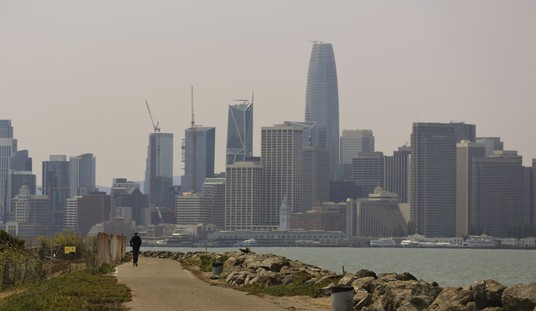The latest iteration of a Hamas-Israel war didn’t last long — if in fact it has actually stopped. Both sides accused the other of provoking the sharpest fighting since the 2014 war, but Hamas and its allies decided that they were getting the worst of it right off the bat. They accepted an Egyptian cease-fire formula just a little over a day after starting rocket attacks that counted in the hundreds:
Palestinian militant groups in the Gaza Strip say they have accepted an Egyptian-mediated cease-fire amid a major flare-up of violence with Israel.
Hamas and smaller armed groups announced the cease-fire in a joint statement late Tuesday.
The deal would end the heaviest round of fighting between Israel and Hamas since a 2014 war.
The rocket attacks began after a covert Israeli operation got discovered two miles into Gaza. A firefight erupted that triggered retaliatory strikes by both sides:
Lt. Gen. Gadi Eisenkot, chief of the general staff of the Israel Defense Forces, said an undercover team was involved in a “very meaningful operation for Israel’s security.”
The unit, which had been at least two miles inside the Gaza Strip, was discovered, leading to an exchange of fire between the troops and Palestinian fighters. A senior Israeli officer was killed, along with seven Palestinian militants, including a Hamas commander.
The Izzedine al-Qassam Brigades, Hamas’s military wing, said in a statement that the Israeli team was two miles inside Gaza in a civilian car when the fight broke out. Residents in the area, east of the town of Khan Younis, said a group of Hamas fighters stopped the vehicle carrying the Israelis to check their identities. It was then that the Israeli unit shot Nour Baraka, a local Hamas leader, and another militant dead, they said.
Anticipating a deeper response following the incident, Israel’s military deployed extra infantry troops and air defenses to the border on Monday. By the afternoon, militant factions in Gaza had launched hundreds of projectiles toward Israeli territory. Several of the rockets hit residential buildings, while an antitank missile struck a bus transporting soldiers, the military said, critically injuring a 19-year-old.
The IDF responded by sending reinforcements for both armored and infantry regiments on the Gaza border and initiating more than 100 airstrikes on key targets. Among them was Gaza’s television broadcasting facilities, knocking Hamas’ main propaganda capabilities off line, at least temporarily. The military noted that it had broadened its usual target-selection profiles to make an immediate impression:
A senior Air Force officer told reporters that the Air Force carried out “significant” strikes on Hamas and other terror groups in Gaza.
“The number of targets and their significance have increased in comparison to the past,” he said, explaining that the “targets were important both in practice and morale as some of the targets included buildings with several stories in the middle of Gaza City. The challenge of building likes these, their height and the fact that they are in the middle of an urban area is a major tactical challenge.”
Compared to Operation Protective Edge which saw the Air Force strike such buildings during the last night of the operation, according to the senior officer, three of the four high rise buildings were hit in the span of two and a half hours and there were no civilian casualties.
Consider the impression made. So far, though, signals have been mixed as to whether Israel will accept the cease-fire. Initial reports after a security cabinet meeting concluded had Israel accepting the terms of the Egyptian deal, but later denied that such a decision had been reached:
After meeting for some six hours on Tuesday, the security cabinet issued a laconic and amorphous statement that gave little indication of whether Israel had its sights set on war in Gaza, or a possible cease-fire arrangement.
“The security cabinet discussed the events in the South,” the three-sentence statement read. “The cabinet heard briefings from the IDF and security officials on the attacks and widespread action against terrorist sources in Gaza. The cabinet directed the IDF to continue its actions as needed.”
Israel might believe itself to be in a winning position, but it may not last long. They need Egypt to keep Hamas in check in Gaza, and in that they have an ally in Abdel Fatah al-Sisi, who has reason to keep Hamas’ parent organization the Muslim Brotherhood under his thumb. However, al-Sisi won’t necessarily stand by silently if Israel pursues a war after he put his own prestige on the line to get Hamas to stand down. They can’t afford to alienate al-Sisi, and al-Sisi can’t afford to ignore attacks on Palestinians for long, not if he wants to prevent an uprising in Egypt.
The delay on accepting a cease-fire might depend on just what Israel intended to accomplish with its covert operation. Were they looking to counteract the tunneling operation, or were they going for Hamas’ command and control center? We may never know, but the IDF might consider it important enough to keep fighting. They considered it important enough to risk another open conflict in the first place.








Join the conversation as a VIP Member